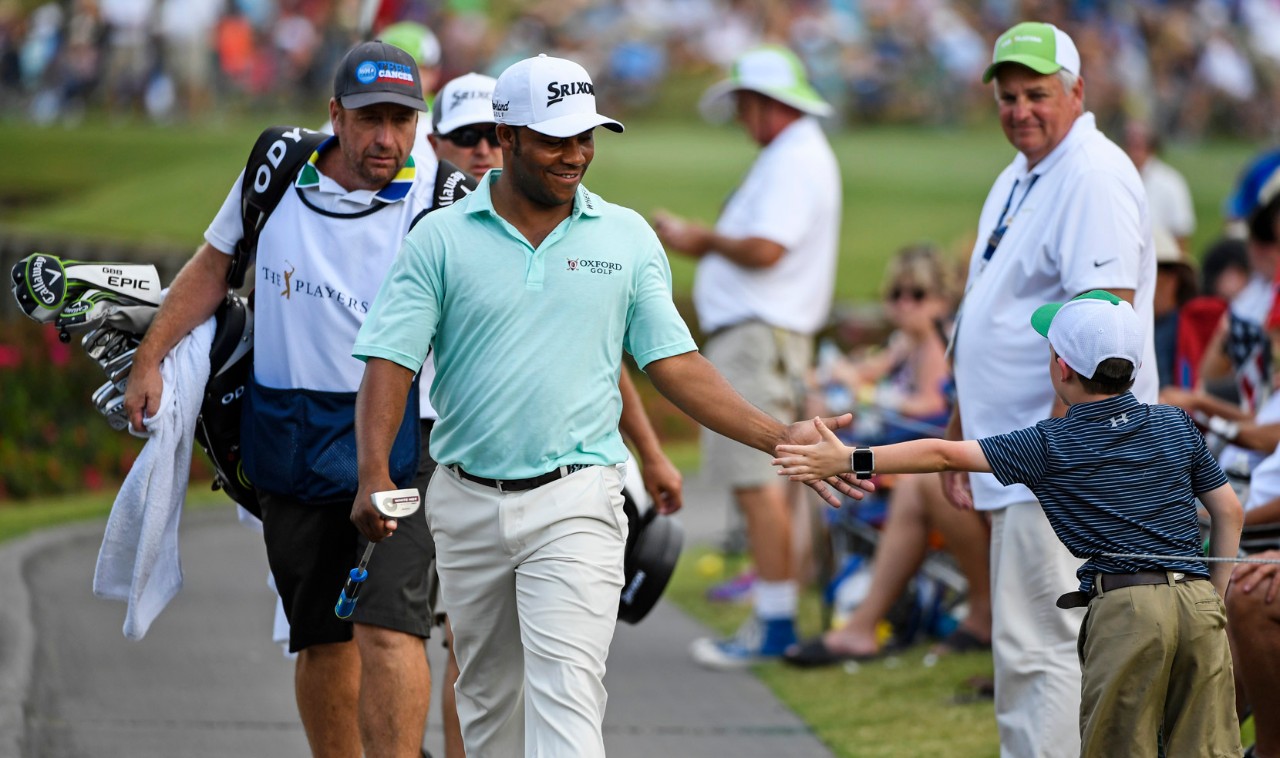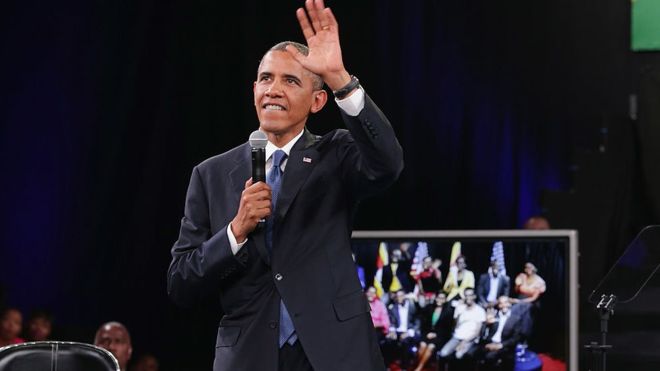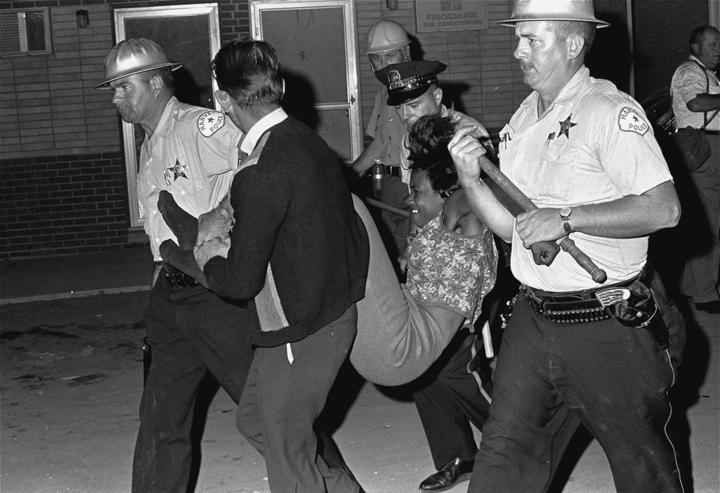
Let’s get something out of the way: I’m black.
Damn, glad I got that off my chest.
I mean, you would think I didn’t know it by the amount of times I’m asked about my race. It’s actually kind of comical at this point in my career … I know exactly when the questions are coming and what’ll be asked.
“What’s it like being the only black guy on Tour?”
“Does it feel lonely as the only African-American out there?”
And my all-time favorite one:
“Do you think we’re growing the game enough for African-Americans?”
 PHOTO BY JARED C. TILTON/GETTY IMAGES
PHOTO BY JARED C. TILTON/GETTY IMAGES
Well, hell no, and that’s a silly question, too. Because we’re not growing the game enough for Hispanics, Whites, Asians and African-Americans alike. It’s about giving everyone an opportunity, not just African-Americans. But I’m gonna get back to that a little later.
If you know me, you know I’m not afraid to say what’s on my mind (just hit me up on Twitter for that). But I’m also realistic about my views, which is why I want to acknowledge the double-edged sword here. The primary reason people know me is that I’m black. I’m not afraid to say that. Maybe I’ll get a bit more media coverage or be seen as the guy who can change the way the Tour is perceived. Being black has helped me, no doubt.
On the other hand, from when I first started playing golf at a high level, I was seen as the good black golfer — not just a good golfer. Even though my primary goal is to be the best golfer on the PGA Tour, and even though I have the same goals as any of the top players, I’m often labeled as that guy. You know … the black guy who isn’t Tiger. Trust me, I hear it.
But out here on Tour, I want to be known as a winner. After I won the Australian PGA Championship this December to capture my first professional victory, that’s how the Australian media treated me.
These people do know I’m like every other Tour player out here, right?
That was legit, man. Your boy beat some hometown favorites including Adam Scott. So when I talked to the media in my press conference and in private interviews, all they wanted to know about was how my victory was going to propel my career, how it felt to be a first-time winner — things like that. They were normal questions. And to the best of my knowledge, I don’t recall being asked one time about my race.
I noticed real quick that the tone in the Australian media was different from anything I had ever encountered in America. They saw me as the goofy dude who worked his ass off to win one of their most prestigious tournaments … not someone who could be used to create a race discussion. I know Australia has its own complicated racial history, but the disparity was clear to me.
Back in the States, every damn article seemed to whittle me down to that old label: The black golfer. I read those stories and thought, These people do know I’m like every other Tour player out here, right? What’s my skin color got to do with any of it?
This week, when I tee it up at the WGC-Bridgestone Invitational in Akron — a tournament I’ve been working to play in my entire life — I’m going to be playing with the best talent from around the world. That’s what’s so great about these World Golf Championships — the fact that the fields are filled with the best of the best.
And the common thread between every one of us?
We’re all golfers. Period.

We’re not growing the game enough for Hispanics, Whites, Asians and African-Americans alike.
HAROLD VARNER III
PHOTO BY GREGORY SHAMUS/R&A/GETTY IMAGES
You hear it thrown around a lot: We all want to grow the game. But are we really committed to doing that?
As I’ve said to a couple of news outlets before, if I’m seen as the guy who will bring different-colored faces to the game, then that’s awesome, man. I’m so down for that. I want to grow the game for kids of all different backgrounds.
But for those same kids to fall in love with golf, they need an opportunity to play like I did.
Being a golfer has nothing to do with race and everything to do with working on the things you need to be a top player.
I grew up in a place called Gastonia, North Carolina after moving from Akron, Ohio. Every summer morning from when I was around nine years old until high school, my dad would drop me off at Gastonia Municipal Golf Course. In my dad’s mind, learning how to play golf was a better idea than allowing me to sit on the couch and play video games. While he worked, I practiced and played. Over time, I started to get the hang of it. I even had the chance to play with some of the adults and sometimes took it to ’em.
Now, you may be thinking these summer playing privileges cost some crazy amount of money — that only rich kids would be able to do something like this. I mean, it’s a good enough deal to think that. But this program wasn’t really expensive at all: For only $100, I was able to purchase this junior membership to Gastonia.
 COURTESY OF HAROLD VARNER III
COURTESY OF HAROLD VARNER III
It completely subverted the argument that you need to be rich to play this sport. It made playing golf extremely affordable.
That meant the world to my family. I didn’t know it at the time, but this was an incredible deal, not only for what it did for me then, but also what it’s still doing for me now. Without Gastonia, I would’ve never learned to play golf, would’ve never earned a scholarship to East Carolina University, would’ve never made my way onto the PGA Tour, would’ve never won in Australia last December and would’ve never been in a position to help bring more kids into the game.
So we want to grow golf — to bring more people into the game? Instead of doing lip service to it, we need to incentivize and help clubs all around the country to start programs similar to the one I participated in at Gastonia. (The fact that the program at Gastonia doesn’t exist anymore sucks. I don’t know this for certain, but I imagine they weren’t able to afford to keep it in existence in the end.) While the PGA Tour has created initiatives — most notably The First Tee (which I’m happy to be involved with) — there’s so much more to be done. I want to be the one leading that charge — not because I look different than 99.9% of other golfers on the PGA Tour, but because I want all kids — rich or poor, white or black — to have the chance to fall in love with the game. I know a bunch of guys on Tour want to do the same.
And the thing is, I imagine parents would be willing to pay that amount of money for their kids to play. While things weren’t always easy financially for my family, they were always willing to pay $100 for an entire summer’s worth of golf.
We need to give kids the same chance I had. If I continue to play well and make a name for myself, hopefully I can make inroads in creating a program for kids similar to the one I participated in at Gastonia. That’s my dream. Because in my mind, being a golfer has nothing to do with race and everything to do with working on the things you need to be a top player.
So with the WGC-Bridgestone being one of the most diverse fields in all of golf, I think it’s a good time to remind everyone that growing the game isn’t such a difficult thing to do. I’m proof that with a good junior system, we can see all different types of golfers out here.
And when we get to that point, we won’t have to worry about the fact that I’m the only black guy on Tour.











